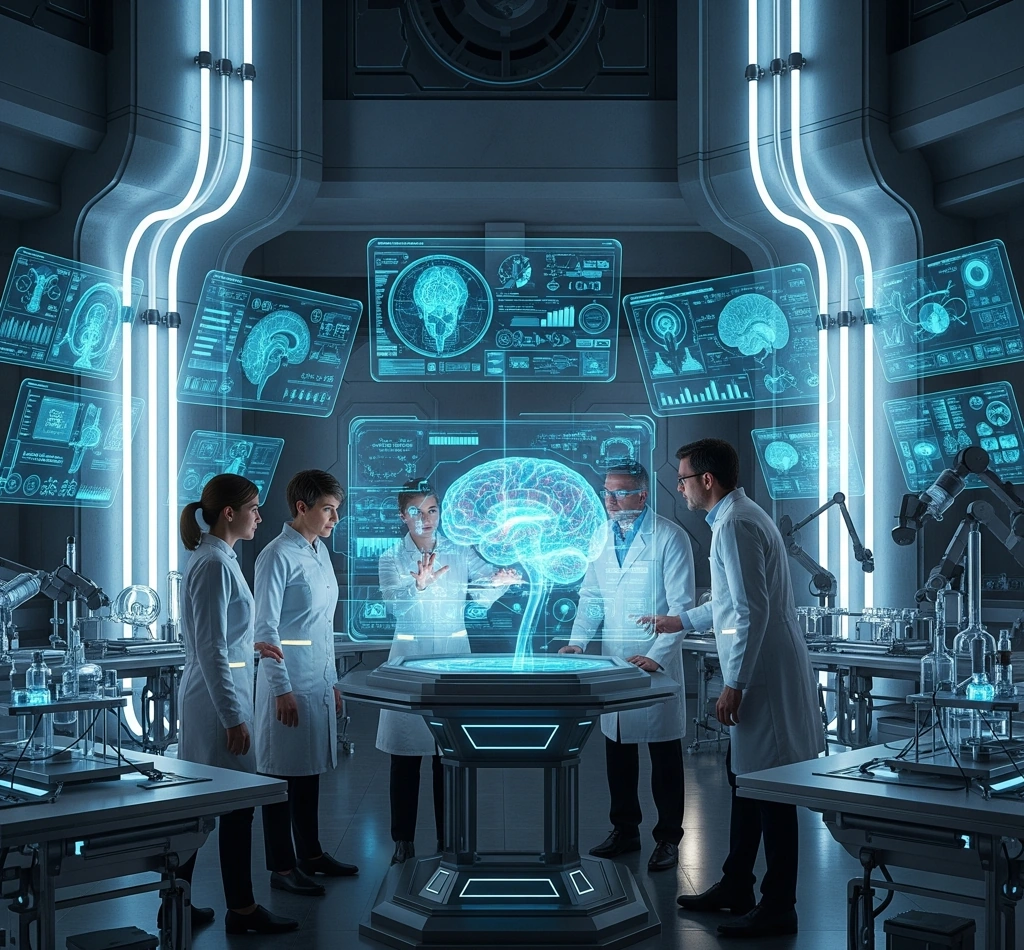It involves thinking beyond conventional boundaries, making unique connections between seemingly unrelated concepts, and producing outcomes that are not only innovative but also applicable and effective. Creativity is not limited to the arts; it is a crucial element in science, technology, business, education, and everyday problem-solving.

Importance of Creativity in Various Fields
-
Science and Technology: Creativity drives scientific discoveries and technological advancements. It allows scientists to formulate hypotheses, design experiments, and develop innovative solutions to complex problems. For instance, the invention of the internet and the development of quantum computing are results of creative thinking.
-
Business and Entrepreneurship: In the business world, creativity is essential for innovation, product development, and strategic planning. Companies like Apple and Tesla have revolutionized their industries through creative approaches to design and technology.
-
Education: Creativity enhances learning by encouraging critical thinking, problem-solving, and the ability to adapt to new situations. Educational methods that foster creativity help students develop a love for learning and prepare them for future challenges.
-
Arts and Literature: Creativity is the lifeblood of the arts. It allows artists, writers, and musicians to express themselves, convey messages, and evoke emotions through their work. Masterpieces like Beethoven's symphonies and Shakespeare's plays are timeless examples of creative genius.
-
Everyday Life: Creativity plays a role in daily problem-solving and decision-making. Whether it's finding a new route to work, cooking a unique meal, or resolving a conflict, creative thinking helps individuals navigate life's challenges effectively.
Neuroscience of Creativity
How the Brain Generates Creative Ideas
Creativity is a complex process that involves multiple brain regions and neural networks. Here’s a look at how the brain generates creative ideas:
-
Default Mode Network (DMN): The DMN is active when the brain is at rest and not focused on the outside world. It is involved in daydreaming, imagination, and spontaneous thinking, which are crucial for the generation of creative ideas. The DMN allows for the free flow of thoughts and the integration of disparate pieces of information.
-
Executive Control Network (ECN): The ECN is responsible for cognitive control, decision-making, and problem-solving. It helps evaluate the feasibility and relevance of creative ideas generated by the DMN, ensuring that they are practical and applicable.
-
Salience Network (SN): The SN plays a role in detecting and filtering relevant stimuli from the environment. It helps switch between the DMN and ECN, allowing for the appropriate allocation of cognitive resources during the creative process.
-
Hemispheric Interaction: While the left hemisphere of the brain is associated with logical and analytical thinking, the right hemisphere is linked to intuition and holistic thinking. Creativity often involves the interaction between these two hemispheres, enabling the combination of analytical rigor with imaginative insights.
-
Neurotransmitters: Dopamine, a neurotransmitter associated with reward and pleasure, plays a significant role in creativity. It enhances cognitive flexibility, allowing for the exploration of new ideas and the breaking of conventional thought patterns.
Factors Influencing Creativity
The Role of Environment
-
Physical Environment: A stimulating physical environment can enhance creativity. Factors such as natural light, open spaces, and aesthetically pleasing surroundings contribute to a conducive atmosphere for creative thinking. For example, Google’s office design, with its vibrant and playful elements, is intended to foster innovation among employees.
-
Social Environment: Interaction with diverse groups of people can spark creativity by exposing individuals to different perspectives and ideas. Collaborative environments that encourage open communication and the sharing of ideas are particularly effective in promoting creative thinking.
-
Cultural Environment: Cultural norms and values influence creativity. Cultures that value individual expression, risk-taking, and innovation tend to produce more creative individuals. Conversely, cultures that emphasize conformity and tradition may inhibit creative thinking.
The Role of Personality
-
Openness to Experience: Individuals who score high in openness to experience are more likely to be creative. They are curious, imaginative, and willing to explore new ideas and experiences.
-
Intrinsic Motivation: Intrinsically motivated individuals engage in activities for the sheer pleasure and satisfaction they derive from them. This internal drive often leads to higher levels of creativity compared to extrinsically motivated individuals who are driven by external rewards.
-
Resilience and Perseverance: Creativity often involves trial and error, setbacks, and failures. Individuals who are resilient and persistent are better equipped to navigate these challenges and continue working towards creative solutions.
The Role of Experiences
-
Diverse Experiences: Exposure to a wide range of experiences, cultures, and disciplines can enhance creativity by providing a rich reservoir of knowledge and perspectives to draw from. Traveling, learning new languages, and exploring different fields of study are examples of experiences that can boost creative thinking.
-
Reflective Practice: Reflecting on past experiences and learning from them is crucial for creative growth. This practice allows individuals to identify patterns, make connections, and generate new ideas based on their reflections.
-
Formal Education and Training: Education and training in creative fields, such as art, music, and design, can provide individuals with the skills and techniques necessary to express their creativity. However, it’s essential that educational systems also foster critical thinking and problem-solving abilities to fully nurture creative potential.
Techniques to Enhance Creativity
Practical Methods to Boost Creative Thinking
-
Brainstorming: Brainstorming sessions encourage the free flow of ideas without immediate judgment. This technique allows for the generation of a large number of ideas, which can later be refined and developed into creative solutions.
-
Mind Mapping: Mind mapping involves creating a visual representation of ideas and their connections. This technique helps organize thoughts, identify relationships between concepts, and stimulate new ideas.
-
Divergent Thinking: Divergent thinking involves generating multiple solutions to a single problem. This approach encourages exploration of various possibilities and helps break free from conventional thinking patterns.
-
Creative Constraints: Imposing constraints or limitations can paradoxically enhance creativity by forcing individuals to think outside the box and come up with innovative solutions within the given parameters.
-
Incubation Periods: Taking breaks and allowing ideas to incubate can lead to sudden insights. Engaging in unrelated activities during these periods allows the subconscious mind to work on the problem, often resulting in creative breakthroughs.
-
Cross-Disciplinary Collaboration: Collaborating with individuals from different fields can lead to the exchange of ideas and perspectives, fostering creativity. This approach leverages the diverse expertise and experiences of team members to generate innovative solutions.
-
Creative Exercises: Engaging in exercises such as drawing, free writing, and improvisation can stimulate creative thinking by encouraging spontaneous and uninhibited expression.
Case Studies and Examples
Notable Examples of Creative Breakthroughs and the Processes Behind Them
-
Thomas Edison’s Invention of the Light Bulb: Thomas Edison’s creative process involved relentless experimentation and persistence. He tested thousands of materials for the light bulb filament before finding the right one. Edison’s approach exemplifies the importance of resilience and iterative problem-solving in the creative process.
-
Steve Jobs and the Development of the iPhone: Steve Jobs’ vision for the iPhone was driven by his ability to think differently and challenge the status quo. His emphasis on design, user experience, and integrating various technologies into a single device revolutionized the smartphone industry. Jobs’ success highlights the role of bold vision and cross-disciplinary thinking in creativity.
-
J.K. Rowling and the Creation of Harry Potter: J.K. Rowling’s creative journey began with the initial idea of a young wizard and evolved through years of development and writing. Her ability to create a rich, immersive world and complex characters demonstrates the power of imagination and perseverance in creative endeavors.
-
Albert Einstein’s Theory of Relativity: Einstein’s theory of relativity was born from his ability to think beyond conventional physics and visualize complex concepts. His thought experiments and imaginative approach to problem-solving were crucial in developing one of the most significant scientific theories of the 20th century.
-
The Wright Brothers and the Invention of the Airplane: The Wright brothers’ success in inventing the first powered airplane was a result of their meticulous experimentation, learning from failures, and applying principles from various fields such as aerodynamics and engineering. Their innovative spirit and collaborative efforts were key factors in their groundbreaking achievement.
Conclusion
Creativity is a multifaceted and invaluable asset that drives innovation, problem-solving, and personal fulfillment. By understanding the neuroscience behind creativity, the factors that influence it, and practical techniques to enhance it, individuals and organizations can unlock their creative potential and achieve remarkable outcomes. The case studies of notable creative breakthroughs illustrate the diverse pathways to creativity and the profound impact it can have on various fields. Embracing creativity in all aspects of life not only leads to greater success but also enriches our experiences and expands our horizons.
